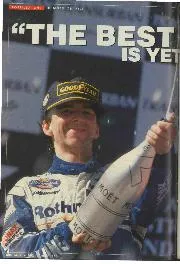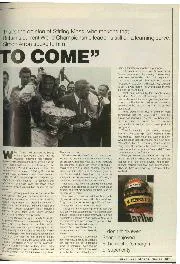

The Best is Yet to Come
That's the opinion of Stirling Moss, who reckons that Britain's current World Championship leader is still on a learning curve. Simon Arron spoke to him When Damon Hill crossed the…
A late, lugubrious – but wise – friend of mine had a rather splendidly deflating line which he used on special occasions. He would consider the evidence of any argument, and then remark flatly “I think there’s rather less to this than meets the eye.”
It seems to me that this should perhaps be applied to the manufactured hyper-enthusiasm generated this season by Red Bull’s certainly admirable run of success with Max Verstappen and its RB19: “So much success has been entirely unprecedented in the entire history of human kind, we are living through a phenomenal period of sporting history”, our jaws should all be dropped clear to the carpet…
Of course one expects this kind of stuff from marketeers as proficient as those who built the Red Bull fizz legend in the first place, but much of it hasn’t come from them at all. Instead the motor sporting media – especially broadcast media – seems largely to have been doing the job for them, statistics brandished grown from the kind of often purblind study pursued for decades past by ball sports devotees.
But in terms of keeping this decade’s motor racing stats in at least reasonable proportion, I do wonder quite how sports statisticians concerned with football, or cricket, tennis, netball, baseball, rugby, American football… would handle matters if their sport had undergone as many game-changing revolutions as has Formula 1 in particular? Talk about moving the goalposts.
While other sports have featured major games proliferating almost as much as have World Championship Formula 1 rounds over the past 20 years, there have been other factors at play.
In Formula 1 back in 2003 the World Championship comprised 16 qualifying GP races. By 2013 there were 19. This year there would have been 23 – seven more than 20 years ago – but for the devastating floods that forced the cancellation of the Emilia-Romagna Grand Prix at Imola.
Indeed, when the FIA Drivers’ World Championship was introduced in 1950, it comprised only seven qualifying rounds, and one of those was the Indy 500, which attracted zero mainstream F1 entries.
I vividly recall Colin Chapman of Lotus referring to the importance of old style non-Championship F1 races, as “providing the additional earning opportunities we all need.”
Since non-Championship F1 races were squeezed out of the calendar in April 1983, when the swansong Race of Champions was run at Brands Hatch, the number of Championship races available to be won has inflated hugely. Has that in turn devalued each individual round?
“Changing the rules is like making the holes on golf courses bigger”
What has been fundamental is that in motor racing more than any other topline pinnacle sport, it is not the athlete that makes the real difference – but the quality of their sports equipment. How many times has the character of Grand Prix racing been changed? The ban on alcohol fuel, insistence upon AvGas aviation petrol and reduction of minimum World Championship race distance from 500km to 300km in 1958 was epochal. And significant further change has followed; it’s like making the holes on golf courses bigger…
Nor of course is the sportsman or sportswoman any more alone once the start flag falls. While their item of sports equipment these days downloads more data into pit-bound, or even factory-based, telemetry and data-logging systems than old-time teams could ever even imagine, the drivers have verbal contact with a cast of dozens to assist them on their way. Once-private concern or angst can instantly be verbalised – the load shared among a group. And as for performing in an environment of relative safety – it’s now no comparison with what has gone before.
This is now a vastly different world accommodating a vastly different sport… a different challenge, contested by cars whose technology and capability are both interplanetary rocketship science ahead of what we used to see and what we used to enjoy. A sport to be impressed by, and to admire, often because we ourselves would be far too ill-equipped, or even not brave enough, to do what we were watching.
So when the media moguls and the marketeers and promoters explode into lyrical claims about the super-significance of any one team’s jaw-dropping achievement in winning more GPs in a row than ever before, or setting more pole positions, or fastest laps, or completing more miles in the race lead than anyone ever since St Paul the Apostle and Caractacus the camel driver, just bear in mind that single, solitary word: “proportion.”
And if anybody dare go into raptures about the new grand total of World Championship points amassed by any modern driver, just stick your boot straight through the TV screen, or take a pair of pliers to the circuit PA system’s wiring. So many points-system changes, so that more kids at the party can go happily home laden with consolatory treats, have demolished any comparative historical relevance it ever had.
Indeed, as my old mate sometimes observed “There’s rather less to this than meets the eye…”. Trouble is, and whisper this bit, most of ‘us’ still love it.
Doug Nye is the UK’s leading motor racing historian and has been writing authoritatively about the sport since the 1960s